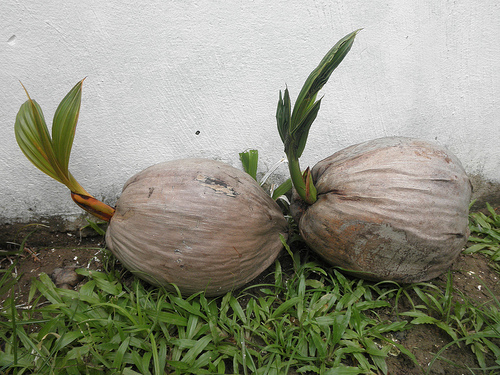A promising technology in coconut mass propagation is currently being tested and evaluated in the country by a group of researchers from the Philippine Coconut Authority (PCA), University of the Philippines (UP), Bicol University (BU), and Visayas State University (VSU).

The coconut somatic embryogenesis technology (Cset) project funded by the Department of Science and Technology-Philippine Council for Agriculture, Aquatic and Natural Resources Research and Development (DOST-PCAARRD) aims to address the dire need for quality planting materials in the country. PCA reported that one of the pressing concerns of the industry is the low productivity of the existing coconut stands – covering almost 500,000 hectares of old and senile trees. The problem is compounded by the fact that coconuts are being produced mainly through seednut germination or embryo culture technique with a one seedling per seednut or per embryo rating.
With a high seednut requirement needed for this vast area of coconut plantations, new approaches are being done to meet the requirement in the most effective way possible. The use of Cset is one of the interventions identified to revitalize the Philippine coconut industry.
Cset is a tool for rapid mass propagation of superior genetic stocks for high yield, pest and disease resistance, and high value products. It is an alternative technique which involves the use of immature flowers, immature embryos, and plumule (meristematic part of the embryo).
Researchers reported that among the explants tested, the plumule has been noted to be more responsive to in vitro manipulation for the micropropagation of coconut than immature flowers and leaves.
The protocol is currently being enhanced to attain as much as 1,000 seedlings per plumule by using explants from high yielding tall and dwarf coconut varieties.
By using planting materials derived from Cset, the existing old and senile coconut trees, typhoon-damaged, and insect-infested palms will be replaced with more productive trees. The technology is expected to benefit the farmers in coconut growing areas and suitable coastal areas in Regions: 4, 5, 8, 9, 11, and 12.
To date, the highest multiplication rate that could be attained is 80–120 seedlings per plumule. This result is considered very promising when compared to traditional mass propagation techniques.
PCAARRD’s commitment to Outcome One will be showcased by the Council in its participation to the National Science and Technology Week (NSTW) on July 24-28 at SMX Mall of Asia, Pasay City.
“Outcome One serves as DOST’s blueprint towards alleviating poverty in the agriculture and aquatic sectors as part of the government’s social contract with our people,” said DOST Secretary Mario G. Montejo in his message during one of the events of the Council.
The 2015 NSTW adopts the theme Philippines: A Science Nation Innovating for Global competitiveness.
PCAARRD, on the other hand, adopts the theme Strategic Industry S&T Program for Agri-Aqua Growth (SIPAG) ni Juan to bolster PCAARRD’s commitment to Outcome One which the Council pursues, through its Industry Strategic S&T Plans, among other programs, hence the tagline SIPAG ni Juan.
by Sharie Al-Faiha A. Abustan, DOST-PCAARRD S&T Media Service

